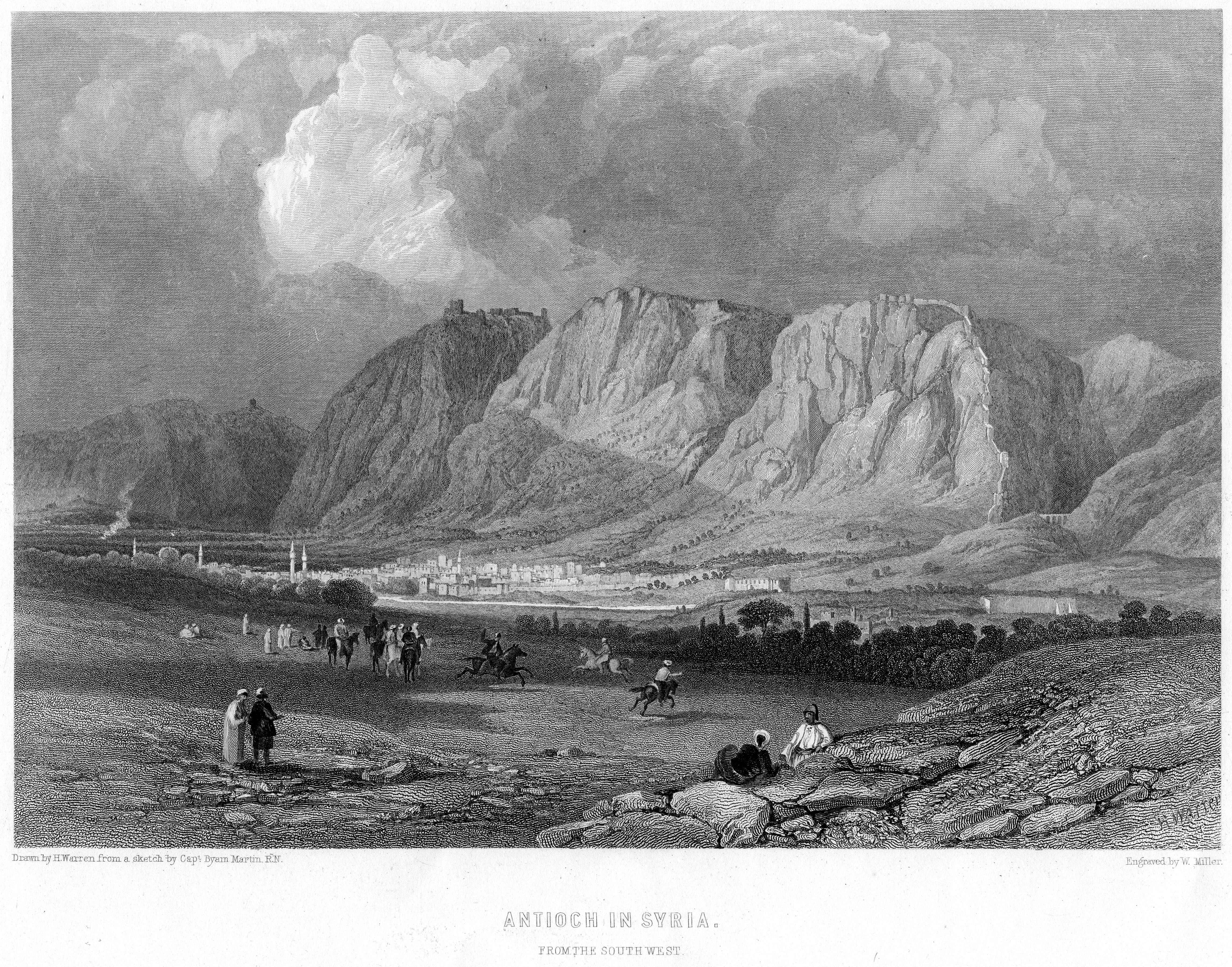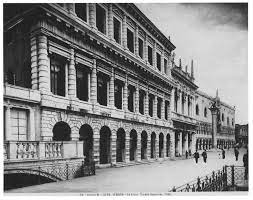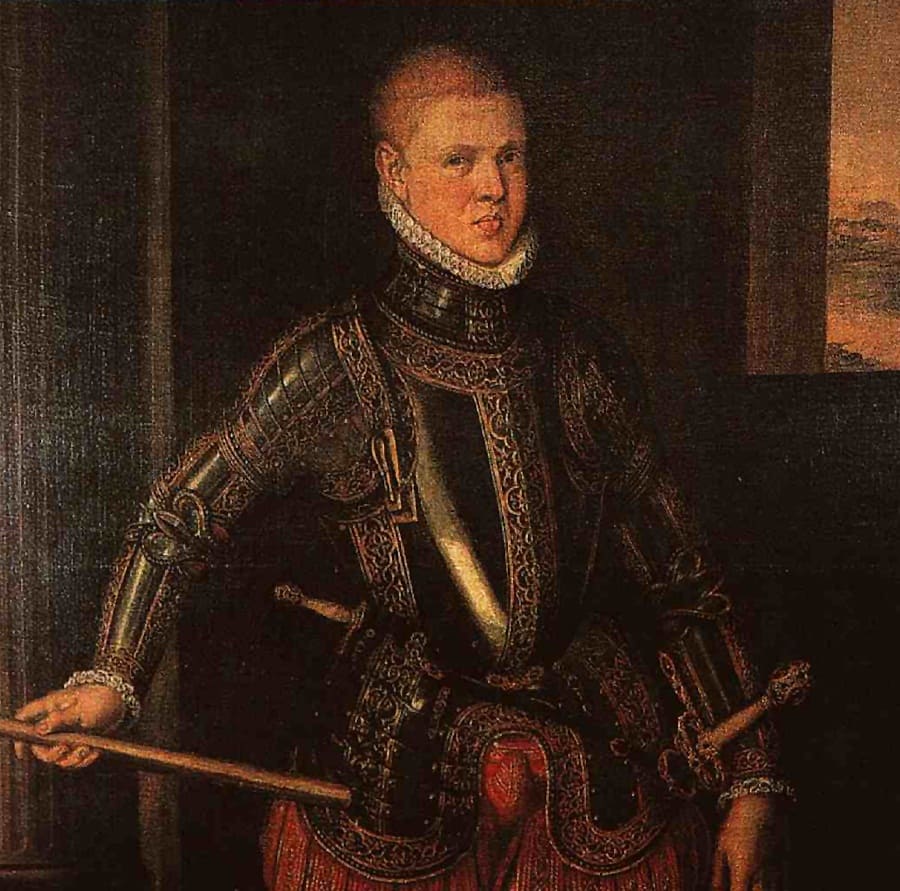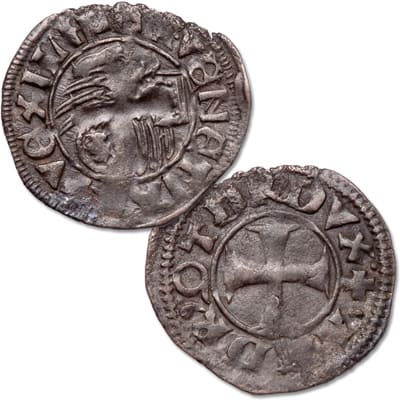Collecting the not-so-dull Middle Ages
Over 1500 years ago, the Roman Empire was breaking apart for the last time. The next big historic milestone involved Christopher Columbus. What happened in between? A span of time called the Middle Ages.
What a dull label! It was anything but average. It teemed with crusades and seafaring discoveries. Glorious myths grew around the search for the Holy Grail. Incredible inventions happened: eye glasses, mechanical clocks, and flying buttresses that gave rise to Gothic architecture.
Also remarkable are the beautifully worn coins that survived this long era. Let’s take a journey through the medieval days of yore. We’re going to look at three coins that could have been used by bold knights, fair damsels and even a mariner buying a tankard of mead!
Crusader Coins
 Antioch in Syria
Antioch in SyriaThe current city of Antakya, Turkey was once called the Principality of Antioch. Originally established by the ancient Greeks, Rome regarded Antioch as the cradle of Christianity, and part of the vast Holy Lands it sought to control as much for religious reasons as for commercial ones.
Located on the Orontes River and backed by a steep mountain, Antioch (right) was a crossroads for the lucrative spice and silk routes. It had a mint. It also was under control of the Seljuk Turks. They were Sunni Muslims who had emigrated to Persia from the Caspian Sea in Central Asia.
During the First Crusade, Antioch’s fortress wall was breached in 1098. A Norman knight in southern Italy, Bohemond of Taranto, claimed the city as his own domain, and established a dynasty.
Struck by hand, coin designs changed, too. They featured crusade symbols. Under Bohemond III, who reigned from 1133-1201, silver deniers featured a helmeted knight wearing chainmail and the rim inscription of boamvndus (Bohemond) on the obverse. On the reverse was the crusader cross and the rim inscription of amtiocnia (Antioch). You can truly hold medieval history in your hands with this coin issued early in the 12th century!
Trade Coins

Located between Gaul in western Europe and the East Asian countries that ringed the Mediterranean, Venice was the Italian port city best situated for trade. Venice also produced large war fleets for Rome’s foreign crusades. This was especially key for pushing back repeated Islamic-led attempts to expand the Ottoman Empire.
International trade led Venice to develop a strong banking system. A mint, La Zecca (left), was built. Fronting on St. Mark’s Square, it backed up to the sea as a precaution against sparks from melting metal that could set fire to surrounding buildings. Was this silver Tornesello used to buy luxurious silk imported from China? Or might Marco Polo have used it in Mongolia, trading with Kublai Khan, Genghis Khan’s grandson?
The Portuguese set sail
The Ottomans finally succeeded in closing land routes late in the 15th century. Leaping ahead of its landlocked competitors, Portugal’s king financed a search for an alternate sea route. Count Vasco da Gama led the expedition. Sailing south from the Iberian Peninsula, his fleet rounded Africa’s Cape of Good Hope. It navigated north along the African continent before tacking eastward.
In 1498, Da Gama made Goa, India the first trading capital for Portugal. He went on to claim India’s west and east coasts, plus the island of Sri Lanka for the crown. The result? The Portuguese cornered the market on such flavorful spices as cinnamon, turmeric and cardamom, plus tea, silk, lightweight cotton, semi-precious stones and perfumes. Early in the next century, the Portuguese established Malacca on the Malaysian peninsula as another port, right across from the coffee-rich island of Sumatra.

Back in Lisbon, and by mid-century, King Sebastian (right) had ascended the throne. Raised by Jesuits, he was the only European royal to be named for the 3rd century Christian soldier pierced by arrows and martyred as Saint Sebastian.
Struck by the mint in Malacca, this 1557-1578 Sebastian Dinheiro features the young monarch who lost his life in 1578 at the age of 24 while on a crusade against the Muslims in Morocco. The obverse shows the symbolic three arrows and the reverse features the Portuguese heraldic shield.
His Dinheiro is the youngest medieval coin mentioned here, and the one struck the farthest away from Europe. Yet, it made its way back. In that same year of 1557, Portugal successfully established a trading port in Macau, just off the coast of mainland China. It also lay claim to being the first European country to make contact with Japan. And, as it expanded its colonization of Brazil in South America in the next year, the imagination stirs enough to ask: Where else might this Dinheiro have traveled to?
If you collect coins from the Middle Ages, tell us what makes medieval money fascinating for you!


 1368-1423 Venice, Italy Billon Tornesello
1368-1423 Venice, Italy Billon Tornesello
